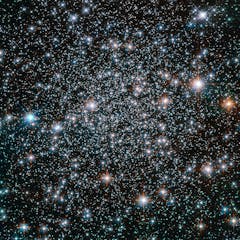
Articles on Stars
Displaying 81 - 100 of 172 articles

By 2025 Elon Musk wants to launch 12,000 satellites and corner the global Internet market. What will be lost is earth-based astronomy, the idea that space belongs to us all and the beauty of a starry sky.

Albert Einstein may have been the ultimate example of a visionary genius, but that did not stop him from twice losing his way due to beliefs that were perhaps not so scientific.

Has the Sun entered a stage of old age?

This observation means astronomers can now develop and test theories that explain how high-mass stars gain their mass.

The Dish in Parkes is scanning the southern Milky Way, searching for alien signals
The Conversation50.7 MB (download)
Today we hear about the Parkes radio telescope's role in the search for alien life. Our guide is the irrepressible John Sarkissian, the scientist who's had his eye on The Dish since childhood.

If Betelgeuse explodes, it will become as bright as the full moon in a matter of days and be visible during day time.

NASA scientists have discovered a new planet orbiting around a nearby star that is in a habitable zone. But does this planet have liquid oceans that can support life?

Dark sky sites can inspire new generations of stargazers, but a better long-term solution would be connecting people with the night sky where they live.

Stars begin their life inside very large, fluffy clouds of space dust and gas called nebulae.

Around the world and throughout history, we find remarkably similar constellations defined by disparate cultures, as well as strikingly similar narratives describing the relationships between them.

In an age when women were rarely allowed in observatories, Margaret Burbidge changed how we saw the stars.

If you got too close to a black hole, it would suck you in and you’d never be able to escape, even if you were travelling at the speed of light.
This point of no return is called the event horizon.

Yes, the Sun absolutely spins. In fact, everything in the universe spins. Some things spin faster than the Sun, some are slower and some things spin ‘backwards’.

When you look at the squiggly lines on Joy Division’s famous album cover, you’re seeing a record of lightning in outer space.

The diameter of the Milky Way is a billion billion kilometres.

Science is full of surprises. While searching for planets orbiting nearby stars, researchers stumbled across the remains of a star that once outshone the Sun.

By studying old and dead stars, we can discover what will happen to our sun in the far, far future. And it won’t end with a big explosion.

Shooting stars are not stars at all. They are tiny space adventurers who accidentally wander into our sky and get sucked toward us by Earth’s gravity. Here’s the story of a shooting star’s journey.

The Milky Way’s disc of stars becomes increasingly warped and twisted the further away they are from the galaxy’s centre.

When you look up at the vastness of space you can see hundreds, thousands and even millions of years into the past.
